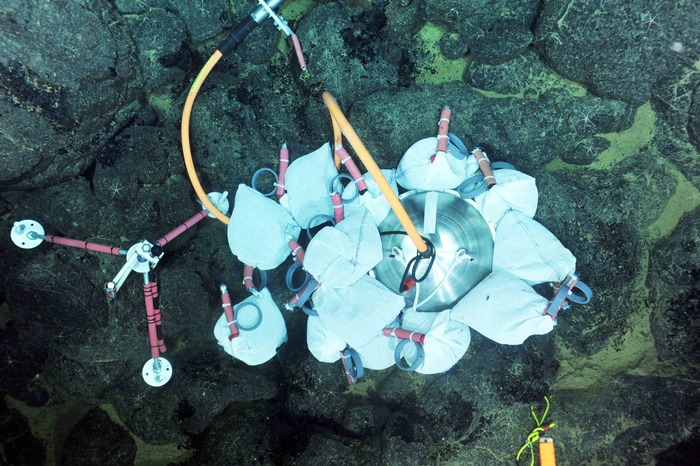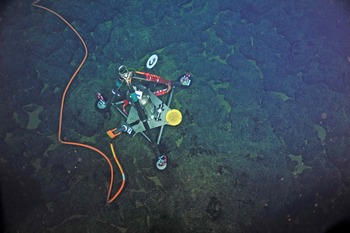Today is an exciting day -- it marks completion of instrument installation at the Eastern Caldera Site at the summit of Axial Seamount. This site is one of three key geophysical sites on the volcano as part of the OOI-RSN cabled observatory funded by the National Science Foundation. Here, a bottom pressure-tilt instrument, two short-period seismometers, and a broadband seismometer coupled to a low-frequency hydrophone will monitor the "heart beat" of the volcano and its “breathing” as the seafloor inflates and deflates.
Prior and ongoing work by Oregon State University and NOAA-PMEL scientist Bill Chadwick, using uncabled pressure sensors, shows that the summit of the volcano is inflating at unprecedented rates. This likely reflects injection of molten lava and gases into the core of the volcano. Previous uplift periods have been precursors to underwater eruptions at the volcano that occurred in 1998 and again in April 2011.
In addition to deformation of the seafloor, Axial is also seismically active with numerous small earthquakes occurring. Some of these likely mark movement of melt beneath the seafloor, while others may reflect the upward migration of boiling fluids to the surface where they form the black smokers that are a hallmark of Axial. Before an eruption, we expect to see 100’s to 1000’s of earthquakes over a very short period of time – marking the upward injection of melt and lava issuing on the seafloor!
The broadband instrument is a broadband triaxial strong-motion seismometer (Guralp CMG-1T 360s-50Hz with CMG-5T Strong Motion, DM24/7-EAM Digitizer/Interface) coupled to a low-frequency hydrphone (HTI-90-U). The short-period seismometer is also made by Guralp. The pressure-tilt instrument is designed and built by Bill Chadwick and includes a Paroscientific Digiquartz pressure transducer with a tilt meter supplied by Applied Geomechanics (LILY).




